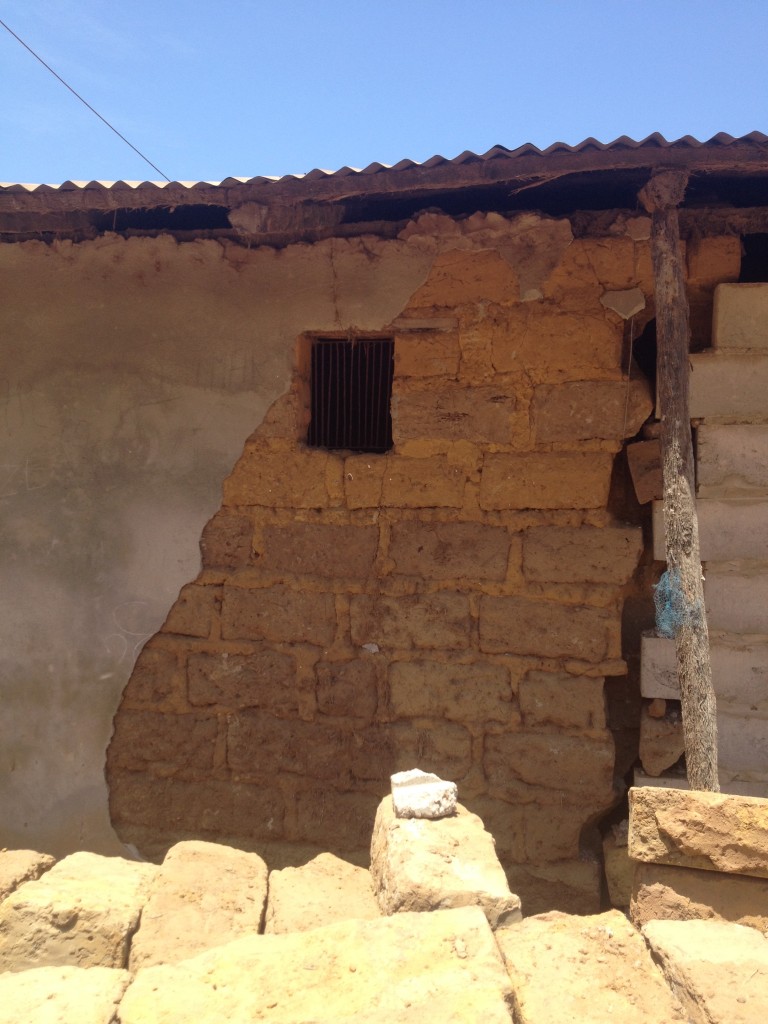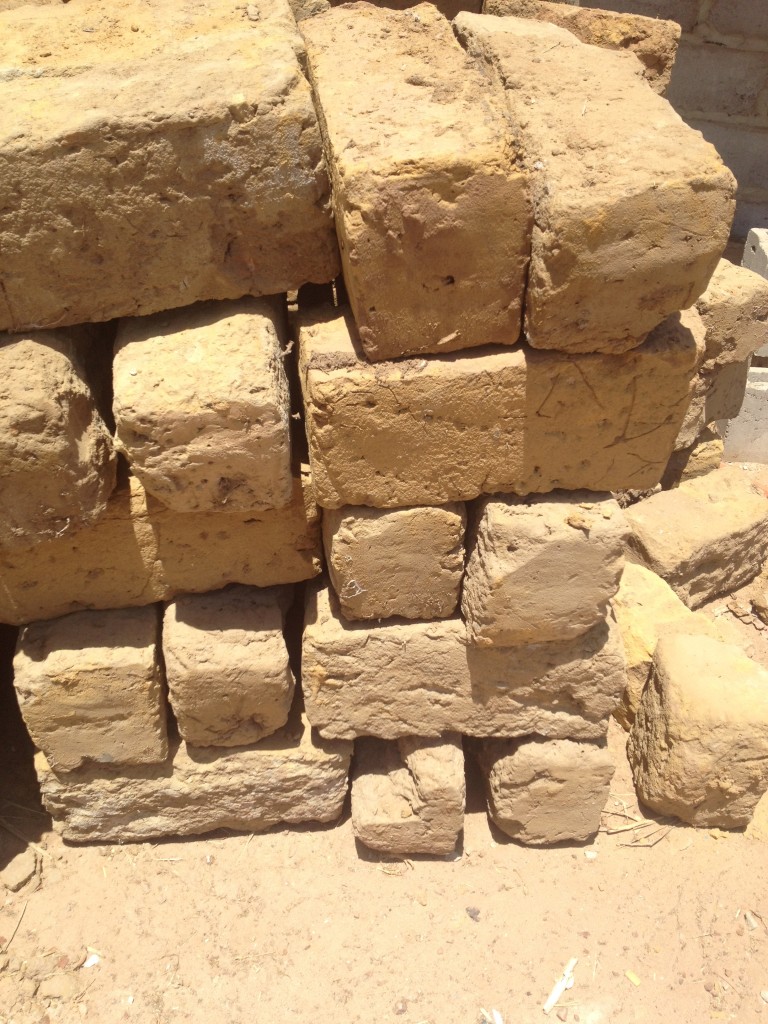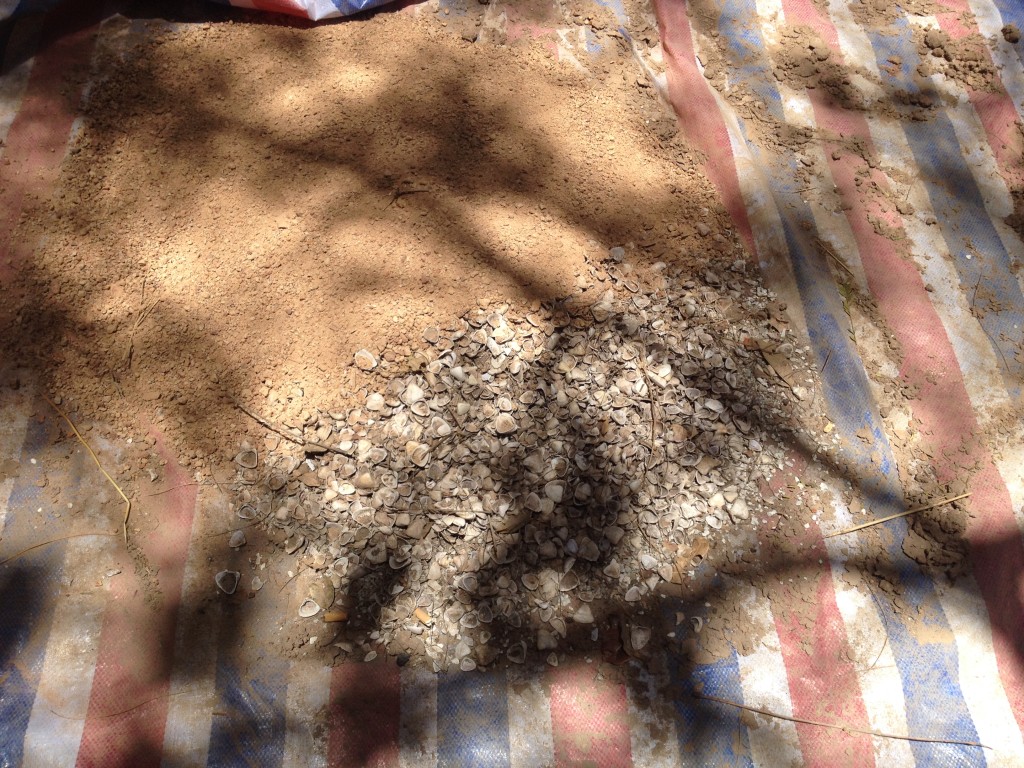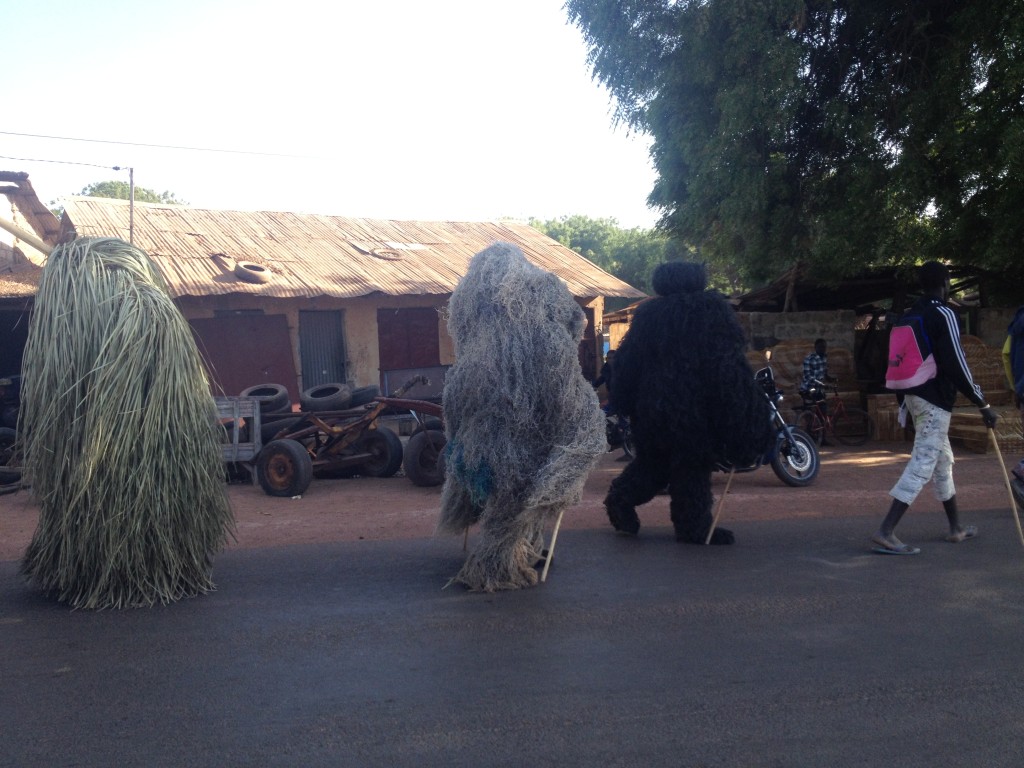Finally biked into “La Casamance”, the lush breadbasket of Senegal that is separated from the “North” by Gambia and a plethora of cultural differences. Immediately the land welcomes you with its diverse forestry, greener landscape, greater living spaces and new language. Diola is the majority ethnic group in this land of rebels that say “Kassumei” rather than “Nangadeff”. It is more tranquil here, less Muslim, and palm wine is the beverage of choice. Tapped every morning by professional tree climbers who take along plastic water bottles which they hang on the tree after lightly tapping holes to find the fountain of this elixir which I am told brings a myriad of health benefits, akin to coconut water. The taste in the morning is fresh and bubbly and naturally earthily sweet. It has a watery milky appearence and people swig it up as they walk down the path home from the boutique. It flows readily most of the year and goes for 250CFA or $.40 a liter.
So here I am now in the land of “banko”, the mysterious earthen construction material and technique I have been told about since my arrival in Senegal. Still not quite sure what to expect as it has come in many different descriptions, I think I have finally figured out. “Banko” is the material of termite mounds which is 90% sand and a small sliver of clay in the shake tests I have performed.  Nonetheless when they break it
Nonetheless when they break it  down, wet it and form it into 16” long by 6” wide and 8” tall blocks, they are used for construction, cemented together and perhaps traditionally with some kind of earthen mortar. Upon closer interaction and after dousing one with water and scraping it with my nails, I find that it disassembles and disintegrates instantaneously and feels like it’s all sand. Oh my!!! No wonder people don’t want to build with it and give it a terrible rap. In addition they build directly on the ground, in a climate with about 4 months of big rains. Some houses I hear withstand the rains for years under the protection of significant “hats” or rooves. Good for them! Other people add cement to the mix. The smart ones don’t cover the bricks with a cement plaster, others bear the consequences and perhaps learn. I am told that there is a cob-like technique called “poto”, demonstrated to me in hand gestures that look like handfuls of some clay mix are balled up and then added to the wall. The big difference with cob however is the lack of straw in their mixes. Despite the extensive presence of straw in this part of Senegal, it is not a custom here to put straw into earthen mixes, only on rooves or for fences. I think that is a major weakness I am happy to share.
down, wet it and form it into 16” long by 6” wide and 8” tall blocks, they are used for construction, cemented together and perhaps traditionally with some kind of earthen mortar. Upon closer interaction and after dousing one with water and scraping it with my nails, I find that it disassembles and disintegrates instantaneously and feels like it’s all sand. Oh my!!! No wonder people don’t want to build with it and give it a terrible rap. In addition they build directly on the ground, in a climate with about 4 months of big rains. Some houses I hear withstand the rains for years under the protection of significant “hats” or rooves. Good for them! Other people add cement to the mix. The smart ones don’t cover the bricks with a cement plaster, others bear the consequences and perhaps learn. I am told that there is a cob-like technique called “poto”, demonstrated to me in hand gestures that look like handfuls of some clay mix are balled up and then added to the wall. The big difference with cob however is the lack of straw in their mixes. Despite the extensive presence of straw in this part of Senegal, it is not a custom here to put straw into earthen mixes, only on rooves or for fences. I think that is a major weakness I am happy to share.
Within a few days of landing here we met Peter Diatta who welcomed us onto his land and set up a spontaneous cob workshop. Peter lives in Monterey part-time with Jenny his American wife and so our Santa Cruz origins were the immediate glue. Peter and Jenny (absent and in the US) were delighted to have a California Cob bungalow on their property and within another week we had found the rare clay source, straw and an uncomfortable excuse for coarse sand.  There is no such thing here so we decided to use their laterite gravel which cost us our cob bounce but seems to be working. One day we used small shells when we ran out of gravel. They could work too as we have seen them used in making cement blocks on islands where there is no coarse sand or gravel. They are certainly easier on the feet but we would need double the amount to get some real texture into the cob mix.
There is no such thing here so we decided to use their laterite gravel which cost us our cob bounce but seems to be working. One day we used small shells when we ran out of gravel. They could work too as we have seen them used in making cement blocks on islands where there is no coarse sand or gravel. They are certainly easier on the feet but we would need double the amount to get some real texture into the cob mix.
So here we are on Day 3 and 70cm up the wall. We have a small group of avid learners of all ages. We tried hard to get some more paying students besides Jenny’s sponsorship of Peter and Maimouna, but it is no easy feat to gather people up with a few days’ notice and ask for 175 Euros on top of that…in a land where you can live on $1 a day. Most “Toubabs” here have giant plots of land, cars, an entourage of labor and live a very comfortable life on their “small” pensions. Nonetheless our last minute timing did not work for them. A few definites never showed up. My boys and I gave up trying to meet our minimum fee of 100€ a day and were grateful to have a beautiful cozy place to build our campsite, water and a gas propane tank. A short ten minute walk to an endless beach of warm water, fresh fish daily and afternoons off…the good life!
Building a 10m2 structure is a wonderful relief. To complete a building from start to finish with a group of students is still not something I have accomplished, both because most buildings have not been finishable in the workshop timeframe and because I usually let the owners finish the roof and the finishing touches for their own ownership of the building.  However I have heard that there is a real desire for that in the student community and so here I hope we can meet the goal for the first time. The second time will be in Cabo Verde where we will have two workshops in which I plan to complete the structures with the students. It’s been a good life so far and I feel graced to have two of my boys along for the ride, learning and sharing. We are making very memorable memories…again…on the road. As I map out the rest of the Global Journey I cannot turn my back on even if I feel tired and ready to stop here and there…I am focusing on my hotspots and aiming to set up workshops ahead of arriving with my cob and ecovillage connections on the various continents I have yet to visit. This means completin somewhere in December 2018, a year longer than I had envisaged, after my learning experience of not circling around twice but just moving forward with some good pre-planning using the good old Internet. Next stop after Cabo Verde….Cameroon! Bechikanam! A bientôt!
However I have heard that there is a real desire for that in the student community and so here I hope we can meet the goal for the first time. The second time will be in Cabo Verde where we will have two workshops in which I plan to complete the structures with the students. It’s been a good life so far and I feel graced to have two of my boys along for the ride, learning and sharing. We are making very memorable memories…again…on the road. As I map out the rest of the Global Journey I cannot turn my back on even if I feel tired and ready to stop here and there…I am focusing on my hotspots and aiming to set up workshops ahead of arriving with my cob and ecovillage connections on the various continents I have yet to visit. This means completin somewhere in December 2018, a year longer than I had envisaged, after my learning experience of not circling around twice but just moving forward with some good pre-planning using the good old Internet. Next stop after Cabo Verde….Cameroon! Bechikanam! A bientôt!
